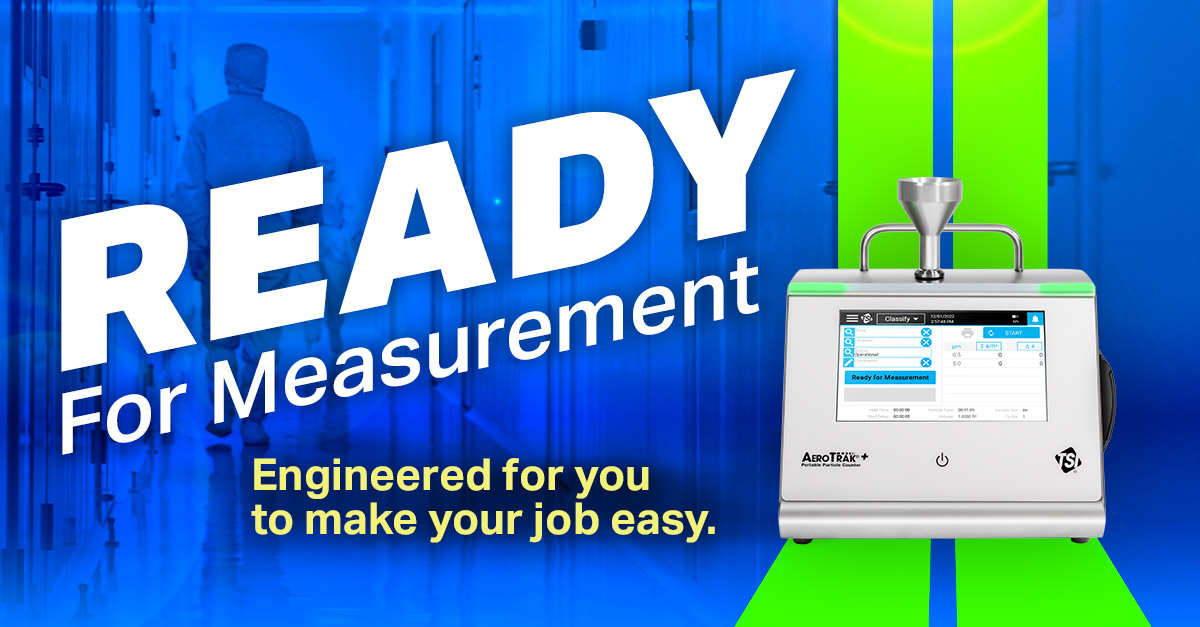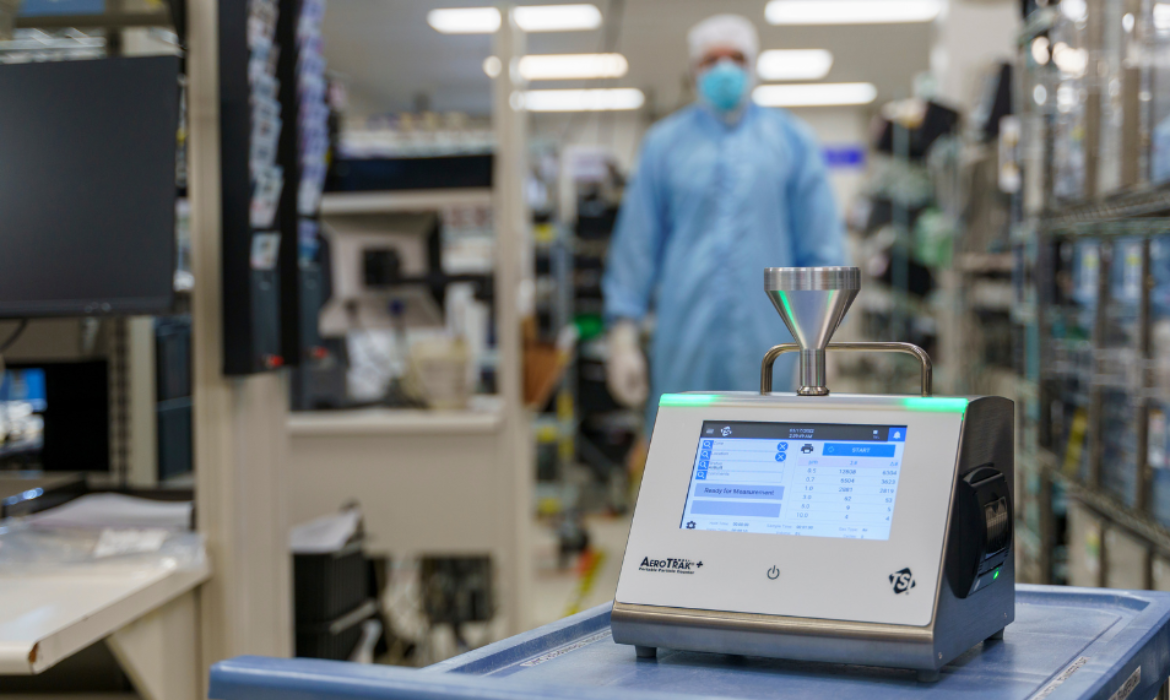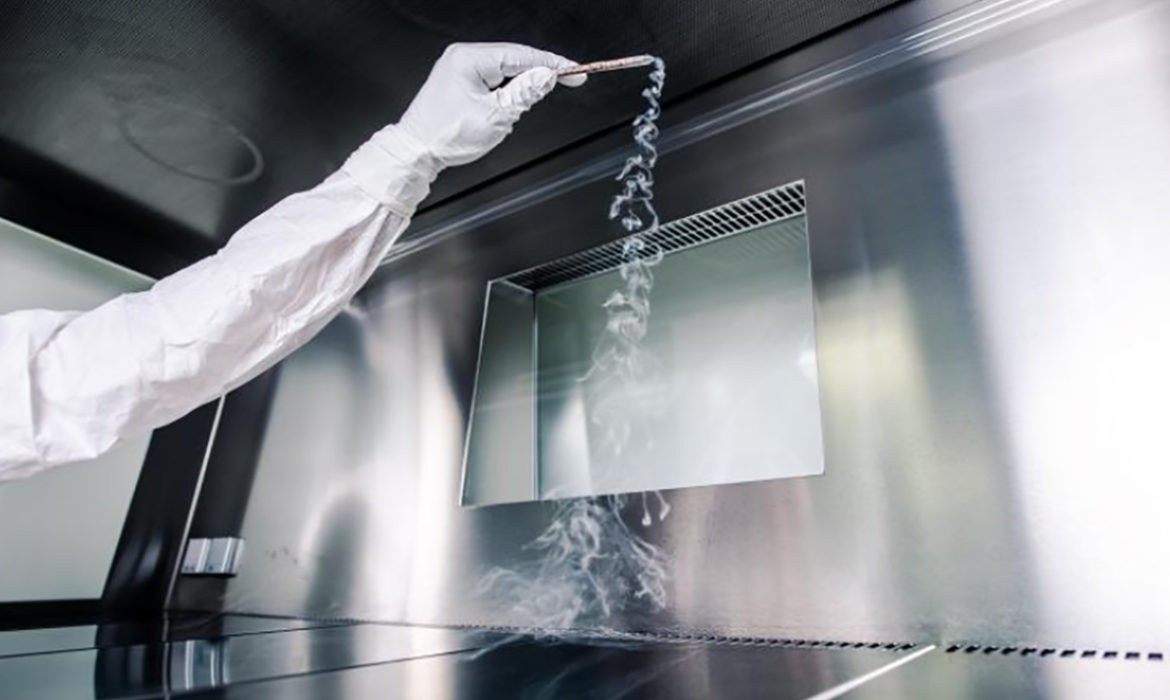Manufacture of Sterile Products – Annex 1: Particle Counting Considerations
August 25, 2023 is the deadline to comply with the newly published update to EU GMP Annex 1. Having increased from 16 pages to 58, there is obviously a lot for pharmaceutical manufacturing facilities to consider and address in a short amount of time — including particle counting for both classification and monitoring in cleanrooms.
Classification in Pharma Cleanrooms
The limits for particles that are 5 µm or larger have been updated to match those stated in the ISO 14644-1 cleanroom standard. This includes no longer specifying limits in Grade A, neither at rest nor in operation, and Grade B at rest.
However, it does note:
Classification including 5 µm particles may be considered where indicated by the CCS or historical trends
Many facilities will likely consider doing this since the monitoring of 5 µm particles remains a requirement. The limit for Grade A has been changed however, from 20 per cubic meter to 29 per cubic meter. The impact of this, based on the equation in ISO 14644-1, is that the minimum sample volume is reduced from 1 cubic meter to 0.7 cubic meters. This could prove to be a significant time savings when sampling Grade A areas with numerous sampling locations.
Particle Monitoring in Pharma Cleanrooms
Besides the changes to the 5 µm particle limits described for classification, there are some additional changes for total particle monitoring. It is now clearly stated that Grade A areas are to be monitored continuously with a suitable sample flow rate of at least 28 liters per minute. Previously, the requirement was vaguely stated as frequently, with the option to use a manifold system.
Sample Tubing for Particle Counting in Pharma Cleanrooms
Whereas the previous version of EU GMP Annex 1 stated that tubing length and radii of bends should be considered for particle loss, the new version now states that the tubing should be qualified.
Guidance provided states:
Tube length should typically be no longer than 1 meter unless justified and the number of bends should be minimized
It also declares:
Portable particle counters with a short length of sample tubing should be used for classification purposes

Portable Particle Counters Engineered for Annex 1 are Key
The TSI AeroTrak®+ Portable Particle Counter A100 Series is engineered to meet the requirements of the new Annex 1, and to make particle counting easy. The new updated limits have been included, with the ability for the user to define Grade A and Grade B at rest limits. The portable particle counters can generate classification reports that automatically determines that all of the Annex 1 sampling requirements have been met.
The TSI AeroTrak+ Portable Particle Counter A100 Series is capable of continuous monitoring in pharma cleanrooms, either as a stand-alone instrument, or as a fully integrated remote particle counter when used with TSI Facility Monitoring Software (FMS). Any concerns with particle loss in tubing can be eliminated by using the direct mount isokinetic sampling probe.
Whether for pharmaceutical cleanroom classification or monitoring, the TSI AeroTrak+ Portable Particle Counter A100 Series makes Annex 1 compliance easy.
Focus on the “Smoke test”
Introduction to the smoke study
Critical manufacturing increasingly frequently requires high quality standards and constant repeatability. For many years now, a multitude of manufacturing processes have taken place in controlled-contamination areas, which vary in terms of size, type and personnel and product safety levels. Their design is based on the level of criticality of the manufacturing or analysis operations for which they were conceived. These are dynamic environments whose operational efficacy depends primarily on the constant balance of different variables, in which air is usually the main control and operation fluid.
The main critical parameters to be monitored to ensure an optimum operation of controlled-contamination areas include analysing the trend of the airflows and process equipment inside the areas. Treated airflows are a fundamental means for protecting critical process environments if appropriately managed and controlled. The smoke study design phase is fundamental for objectively and rationally establishing the objectives to be achieved by observing flows, given their considerable applicability.
The importance of the smoke study
The smoke study is a technique for qualitatively analysing an airflow and consists in injecting into it a tracer (visible to the naked eye) that enables adequate visualisation of the airflows in and around the manufacturing processes to which it is applied. Many tracer generators are available on the market and those most commonly used are based on the production of aerosol from purified water by means of ultrasonic processes or liquid nitrogen exchangers.
The use of this process offers considerable advantages for characterising the airflows of processing areas and the corresponding environments. More specifically, a well-structured process is able to objectively demonstrate the particular aeraulic characteristics of manufacturing environments in order to identify flow trends suitable for protecting processing areas depending on their criticality status.
This type of analysis can be transversally applied to many productive sectors, most notably:
- pharmaceutical companies
- hospitals
- advanced therapies
- aerospace industry
- semiconductor industry
- analysis industry
The tracer
In order to obtain effective results in the analysis of airflows inside controlled-contamination areas, it is fundamentally important that the tracer used has specific characteristics.
More specifically, the tracer must have a high volatility factor so that it can be readily transported by the airflow without influencing its motion, which would significantly compromise the outcome of the study. In these cases, the tracer could follow a downward direction from the mouth of the generator, and prevent a clear view of the stagnant airflows in certain parts of the process. This could lead to distorted results and the failure to identify critical problems within the system.
The effectiveness of the tracer depends on its persistence and visibility, which make it possible to avoid altering the background and to show the characteristics of the airflow clearly. It is important to minimise external intervention during the smoke study and to use a non-toxic and non-corrosive tracer. In addition, the relative humidity of the air must be adequate, in order to obtain proper saturation.
Airflow visualisation
The smoke study can be carried out under “at-rest” and “operational” system conditions. It aims to pinpoint the potential sources of contamination within the manufacturing process and the corresponding environment. These sources can be the result of poor critical area design or inadequate flow management by the ventilation system. Airflow visualisation makes it possible to identify the areas at risk, supports the definition of corrective actions and rates their effectiveness after implementation.
The result of the study may vary depending on the cleanliness of the area and the particular characteristics of the system: in confined areas with one-way flow, the air movement analysis should show one-way flows and the system’s ability to protect the product and critical areas properly. This result is obtained by constant washing with primary air originating from absolute filters, which guarantees the removal of undesirable particulate from the environment.
The main benefits of the smoke study
In addition to being effectively used in the objective analysis of the main and secondary process phases, the smoke study is a useful aid for assessing process layout changes and improvements, by identifying corrective actions.
Inside controlled-contamination areas, the smoke study can be useful for testing pressure cascades towards the surrounding areas and less critical rooms.
This type of analysis has vast applications for the definition of process and set-up operating procedures and can be helpful for training specialised personnel who have to work in a controlled-contamination area.
Lastly, use of the smoke study is an opportunity to give a high added value to the process analysed, thereby improving its quality standards and significantly reducing the risks of possible failures that could have indirect effects on product quality.

